-

Mathematical Analysis, Second Edition
It provides a transition from elementary calculus to advanced courses in real and complex function theory and introduces the reader to some of the abstract thinking that pervades modern analysis. -
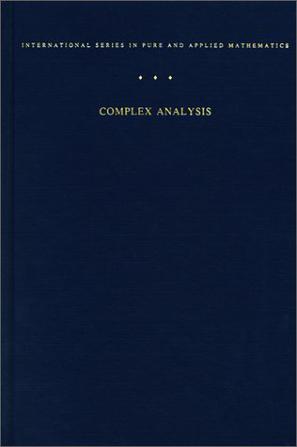
Complex Analysis
A standard source of information of functions of one complex variable, this text has retained its wide popularity in this field by being consistently rigorous without becoming needlessly concerned with advanced or overspecialized material. Difficult points have been clarified, the book has been reviewed for accuracy, and notations and terminology have been modernized. Chapter 2, Complex Functions, features a brief section on the change of length and area under conformal mapping, and much of Chapter 8, Global-Analytic Functions, has been rewritten in order to introduce readers to the terminology of germs and sheaves while still emphasizing that classical concepts are the backbone of the theory. Chapter 4, Complex Integration, now includes a new and simpler proof of the general form of Cauchy's theorem. There is a short section on the Riemann zeta function, showing the use of residues in a more exciting situation than in the computation of definite integrals. -
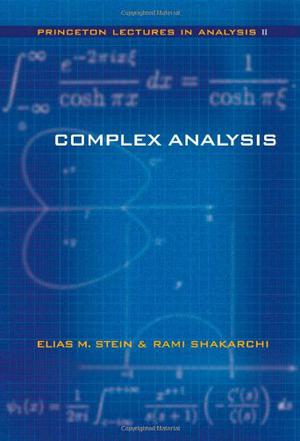
Complex Analysis
With this second volume, we enter the intriguing world of complex analysis. From the first theorems on, the elegance and sweep of the results is evident. The starting point is the simple idea of extending a function initially given for real values of the argument to one that is defined when the argument is complex. From there, one proceeds to the main properties of holomorphic functions, whose proofs are generally short and quite illuminating: the Cauchy theorems, residues, analytic continuation, the argument principle. With this background, the reader is ready to learn a wealth of additional material connecting the subject with other areas of mathematics: the Fourier transform treated by contour integration, the zeta function and the prime number theorem, and an introduction to elliptic functions culminating in their application to combinatorics and number theory. Thoroughly developing a subject with many ramifications, while striking a careful balance between conceptual insights and the technical underpinnings of rigorous analysis, "Complex Analysis" will be welcomed by students of mathematics, physics, engineering and other sciences. "The Princeton Lectures in Analysis" represents a sustained effort to introduce the core areas of mathematical analysis while also illustrating the organic unity between them. Numerous examples and applications throughout its four planned volumes, of which "Complex Analysis" is the second, highlight the far-reaching consequences of certain ideas in analysis to other fields of mathematics and a variety of sciences. Stein and Shakarchi move from an introduction addressing "Fourier" series and integrals to in-depth considerations of complex analysis; measure and integration theory, and Hilbert spaces; and, finally, further topics such as functional analysis, distributions and elements of probability theory. -
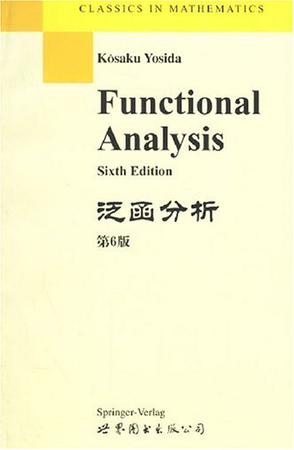
泛函分析
he present book is based on lectures given by the author at the University of Tokyo during the past ten years. It is intended as a textbook to be studied by students on their own or to be used in a course on Functional Analysis, i.e., the general theory of linear operators infunction spaces together with salient features of its application to diverse fields of modem and classical analysis. Necessary prerequisites for the reading of this book are summarized,with or without proof, in Chapter 0 under titles: Set Theory, Topological Spaces, Measure Spaces and Linear Spaces. Then, starting with the chapter on Semi-norms, a general theory of Banach and Hilbert spaces is presented in connection with the theory of generalized functions of S. L. SOBOLEV and L. SCHWARTZ. While the book is primarily addressed to graduate students, it is hoped it might prove useful to research mathematicians, both pure and applied. The reader may pass, e.g., fromChapter IX (Analytical Theory. of Semi-groups) directly to Chapter XIII (Ergodic Theory and Diffusion Theory) and to Chapter XIV (Integration of the Equation of Evolution). Such materials as "Weak Topologies and Duality in Locally Convex Spaces" and "Nuclear Spaces" are presented in the form of the appendices to Chapter V and Chapter X,respectively. These might be skipped for the first reading by those who are interested rather in the application of linear operators. -
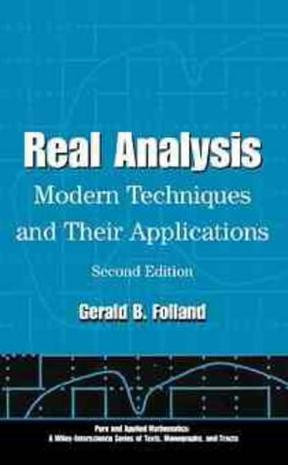
Real Analysis
An in-depth look at real analysis and its applications-now expanded and revised. This new edition of the widely used analysis book continues to cover real analysis in greater detail and at a more advanced level than most books on the subject. Encompassing several subjects that underlie much of modern analysis, the book focuses on measure and integration theory, point set topology, and the basics of functional analysis. It illustrates the use of the general theories and introduces readers to other branches of analysis such as Fourier analysis, distribution theory, and probability theory. This edition is bolstered in content as well as in scope-extending its usefulness to students outside of pure analysis as well as those interested in dynamical systems. The numerous exercises, extensive bibliography, and review chapter on sets and metric spaces make Real Analysis: Modern Techniques and Their Applications, Second Edition invaluable for students in graduate-level analysis courses. New features include: * Revised material on the n-dimensional Lebesgue integral. * An improved proof of Tychonoff's theorem. * Expanded material on Fourier analysis. * A newly written chapter devoted to distributions and differential equations. * Updated material on Hausdorff dimension and fractal dimension. -
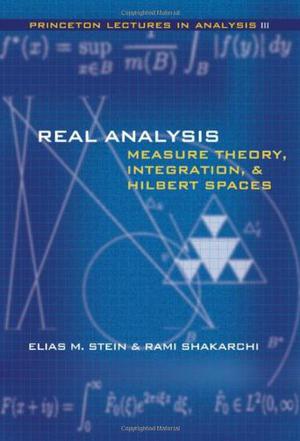
Real Analysis
"Real Analysis" is the third volume in the "Princeton Lectures in Analysis", a series of four textbooks that aim to present, in an integrated manner, the core areas of analysis. Here the focus is on the development of measure and integration theory, differentiation and integration, Hilbert spaces, and Hausdorff measure and fractals. This book reflects the objective of the series as a whole: to make plain the organic unity that exists between the various parts of the subject, and to illustrate the wide applicability of ideas of analysis to other fields of mathematics and science. After setting forth the basic facts of measure theory, Lebesgue integration, and differentiation on Euclidian spaces, the authors move to the elements of Hilbert space, via the L2 theory. They next present basic illustrations of these concepts from Fourier analysis, partial differential equations, and complex analysis. The final part of the book introduces the reader to the fascinating subject of fractional-dimensional sets, including Hausdorff measure, self-replicating sets, space-filling curves, and Besicovitch sets. Each chapter has a series of exercises, from the relatively easy to the more complex, that are tied directly to the text. A substantial number of hints encourage the reader to take on even the more challenging exercises. As with the other volumes in the series, "Real Analysis" is accessible to students interested in such diverse disciplines as mathematics, physics, engineering, and finance, at both the undergraduate and graduate levels.